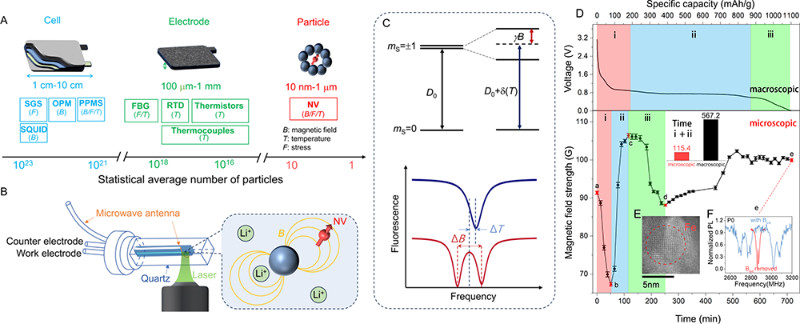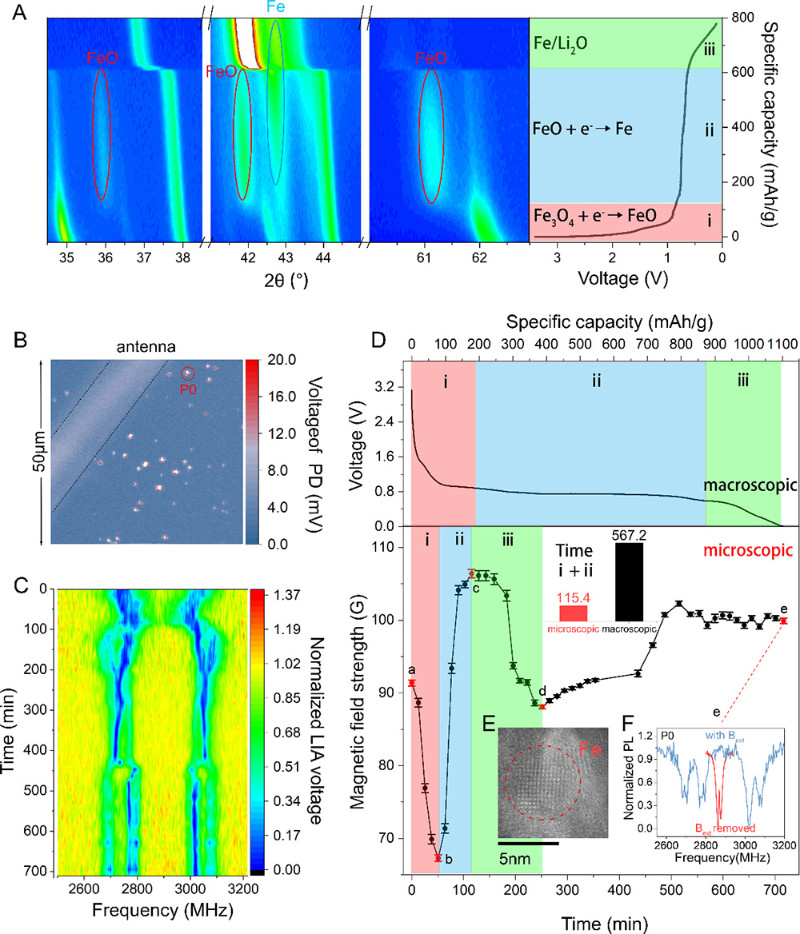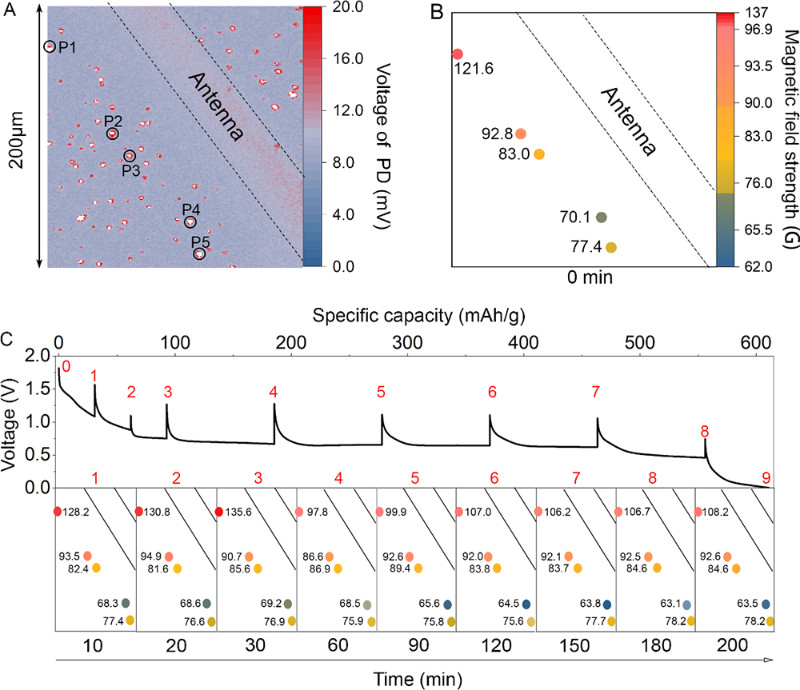Operando Quantum Sensing Captures Nanoscale Electrochemical Evolution in Battery
September 19, 2024 -- Battery performance is heavily influenced by the non-uniformity and failure of individual electrode particles. Understanding the reaction mechanisms and failure modes at nanoscale level is key to advancing battery technologies and extending their lifespan. However, capturing real-time electrochemical evolution at this scale remains challenging due to the limitations of existing sensing methods, which lack the necessary spatial resolution and sensitivity.
Now, researchers from SUO Liumin’s team and LIU Gangqin’s team from Institute of Physics of the Chinese Academy of Science have developed a quantum sensing approach based on diamond nitrogen-vacancy (NV) centers.
NV sensors offer spatial resolution from 1nm to 1μm and are sensitive to variations in temperature, stress, and magnetic fields, holding great potential for real-time, non-destructive monitoring of battery electrode particles.
Using an integrated device combining quantum sensing system with battery, researchers achieved in-situ monitoring of nanoscale active material particles, demonstrated by Fe3O4 electrodes. Their findings revealed non-uniform phase transformations from Fe3O4 to FeO and then to Fe during discharge, with significant microscopic kinetic differences across regions. The study also uncovered superparamagnetic behavior in Fe particles.
The significant difference in magnetic field and temperature distribution within the electrode are also revealed through multithreaded sensing in this study.
These results demonstrated the potential of diamond NV centers for wide-area, high-resolution characterization of nanoscale region within electrode, offering new insights into material behavior and failure mechanisms.
This study entitled “Operando quantum sensing captures the nanoscale electrochemical evolution in battery” was published in Device on September 10.
The research was supported by the Ministry of Science and Technology of China, the National Natural Science Foundation of China, the Chinese Academy of Science, the Beijing Natural Science Foundation, the Clean Energy Beijing Innovation Center, and Center for Clean Energy.







































